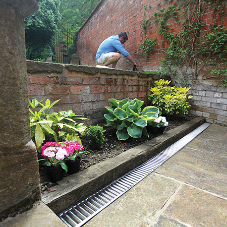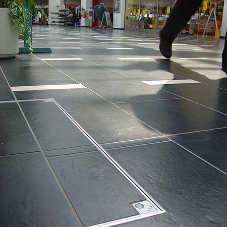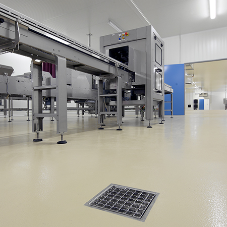This blog was written by ACO Technologies
The uncertain future of the British high street is well-documented. With the rise of online retail compounding dropping footfall, it is difficult to walk through a town centre or down a high street without your eyes being drawn to at least one fluorescent sign promoting one final closing down sale in a shop window.
Here, Gary Morton, Head of Client Engagement at ACO, examines how architects and developers can help breathe new life into tired towns.
While much of the nation has turned to the internet as its premier source of retail, it does not spell the end of days for the high street. After all, this is not the first time a major UK industry has had to adapt to modern life and new technology; it has been happening for hundreds of years.
Perhaps the biggest opportunity for councils whose town centres and high streets that are feeling the pinch from falling retail footfall, lies in delivering amenity and community value. Ultimately, if there is no need for people to visit a high street or town centre, then retail as we know it has little chance to survive, let alone thrive. If, instead, these spaces are repurposed to bring greater value – such as open spaces, urban parks, community centres, libraries, leisure facilities – then requirement for supporting amenities such as shops and cafes, will naturally increase.
How, then can architects and developers facilitate greater community and amenity value in our town centres and high streets?
Squares and plazas have been at the heart of our urban developments for centuries, and remain a staple of most towns across the country. Unfortunately, many have been overlooked in recent years, and can feel dated and a little unloved. Yet, with a little attention, they can easily be transformed into fantastic places to meet, eat, trade and hold events. The surface design detail of such spaces can play an important role in the visual impact of the finished space.
Perhaps the most visible evidence of the boom-bust nature of retail is the volume of derelict commercial space that can be left behind. However, if you look closely at large parts of our major towns and cities, many have areas which, even a few years ago, seemed unsalvageable. Now, though, they have become thriving community hubs, with disused properties being converted into housing, community centres, art and exhibition spaced, offices, as well as restaurants.
Areas such as Birmingham’s Jewellery Quarter and Digbeth are prime examples of how well-managed regeneration and renovation have completely revitalised areas for the better. Such feats, however, rely on all stakeholders – from councils through to architects, landscape designers and developers – fully buying-in to the end goal.
“High streets are places for exchange in the broadest sense and have only lately been considered primarily as places to shop.” says John Prevc, Leader of Urban Design at HOK Architects.
“People’s inherent need to connect with each other within a neutral environment will secure the future of the high street. It is the glue that bring communities together where no one needs to be the host or guest. Places which facilitate this exchange are thriving. Café shops, bars and restaurants are doing well in comparison to shops and this is directly connected to the exchange culture we are all promoting.”
Gary Wilburn, Managing Director at HPW Architecture has worked on a number of projects in this area including the Rushden Lakes retail and leisure development in Northamptonshire, he comments: “To be truly successful, and to make the best progress in this area, communication is key. Involving members of the public, project teams, the client and local authorities so that everybody buys into and contributes to the idea of creating unique spaces that are really special and respond to the place they are in.”
“We all know that leisure is likely to take over big chunks of space whether that’s public realm or private uses. There is huge opportunity for retailers to take advantage of this, they must respond to survive by creating brilliant spaces that are engaging, bring people joy and create a sense of place when they visit.”
“Ultimately, our towns need to work for a local community’s needs as well as a businesses to be truly successful both now and in the future.”
It is also worth noting that, as a nation, we are in the grip of a well-documented housing crisis. Why not, as John Timpson of family firm Timpson’s – and current chair of the government’s retail review panel – points out, repurpose the empty space in our towns and high streets to alleviate this?
Ultimately, no-one wins if our high streets and town centres become redundant ghost towns. While the rise of online shopping and out-of-town retail centres has irrevocably changes the way we shop, and subsequently negatively impacted the retail footfall in town centres and high streets, it should not spell the end of their days. As humans, we have an inherent need for community, and the spaces that are increasingly becoming available can – and should – be repurposed to meet this need. By revitalising these spaces, and providing real amenity and community value, it won’t be too long before the footfall returns. Afterall, there are only so many things you can do online.
For more information about ACO’s range of water management solutions for urban environments, click here.
Future of the high street [BLOG]
| T | (01462) 816666 |
|---|---|
| 01462 816666 Tech Dept. | |
| F | (01462) 815895 |
| E | marketing@aco.co.uk |
| W | Visit ACO Technologies plc's website |
| ACO Business Park, Hitchin Rd, Shefford, Beds, SG17 5TE |









